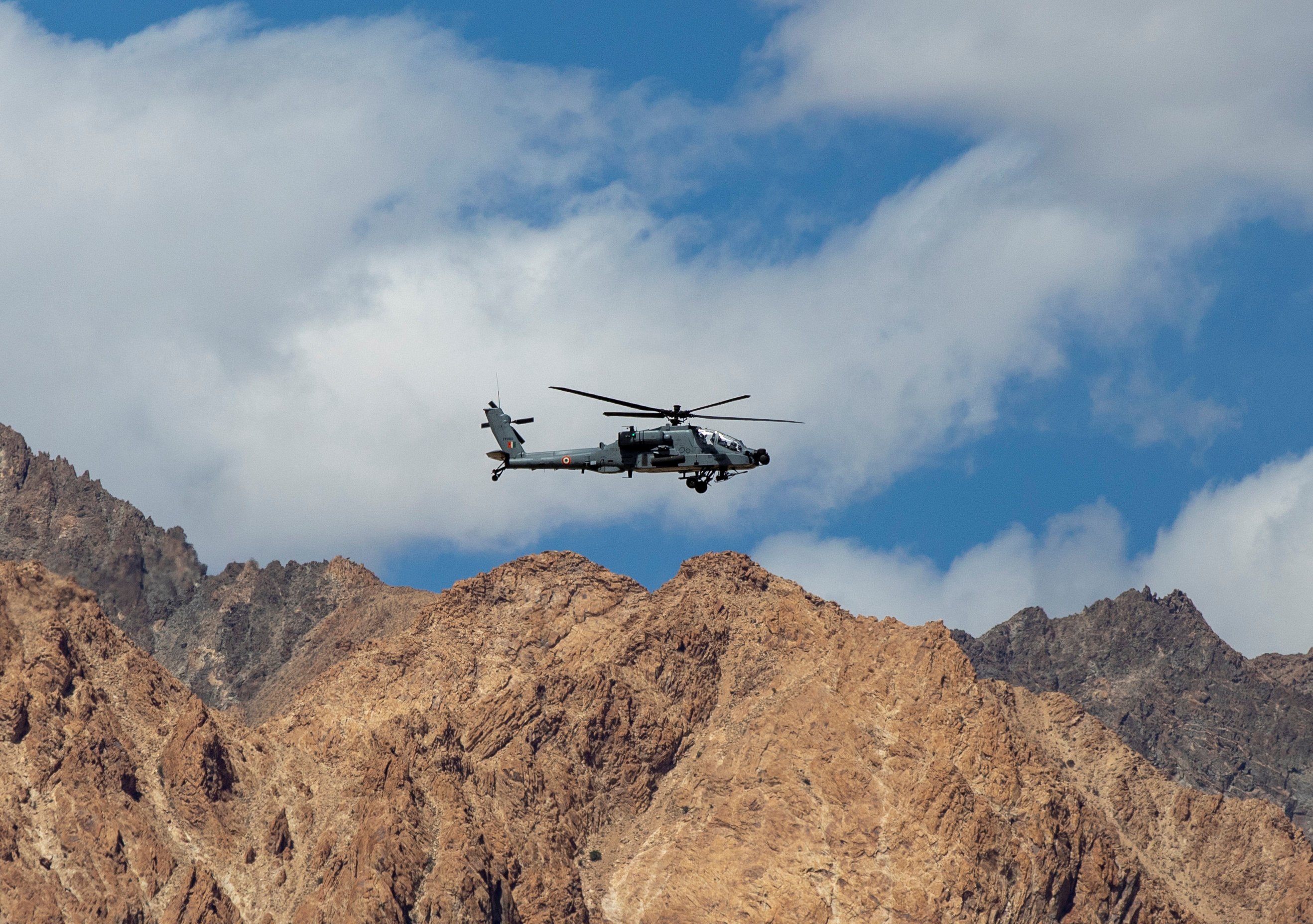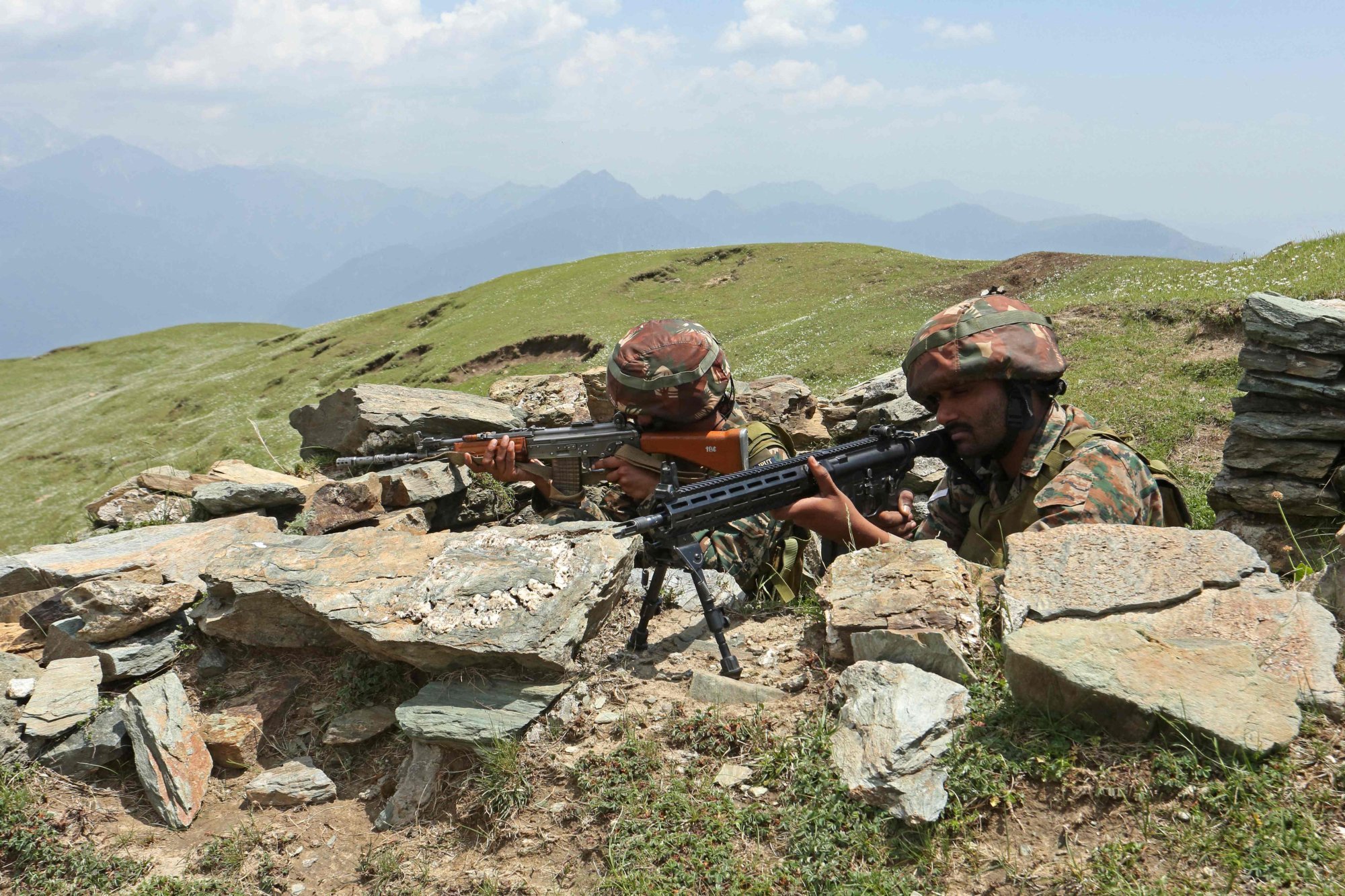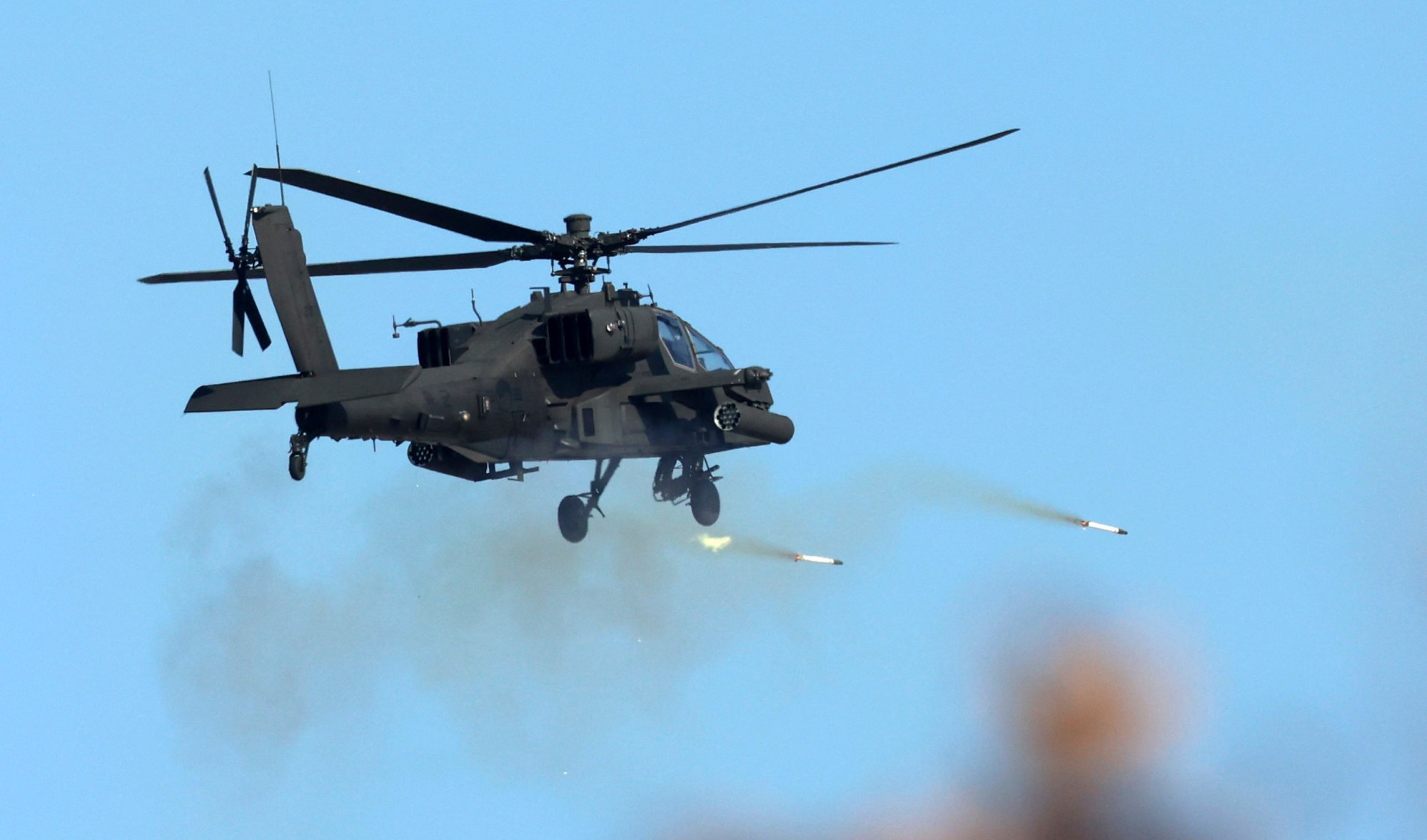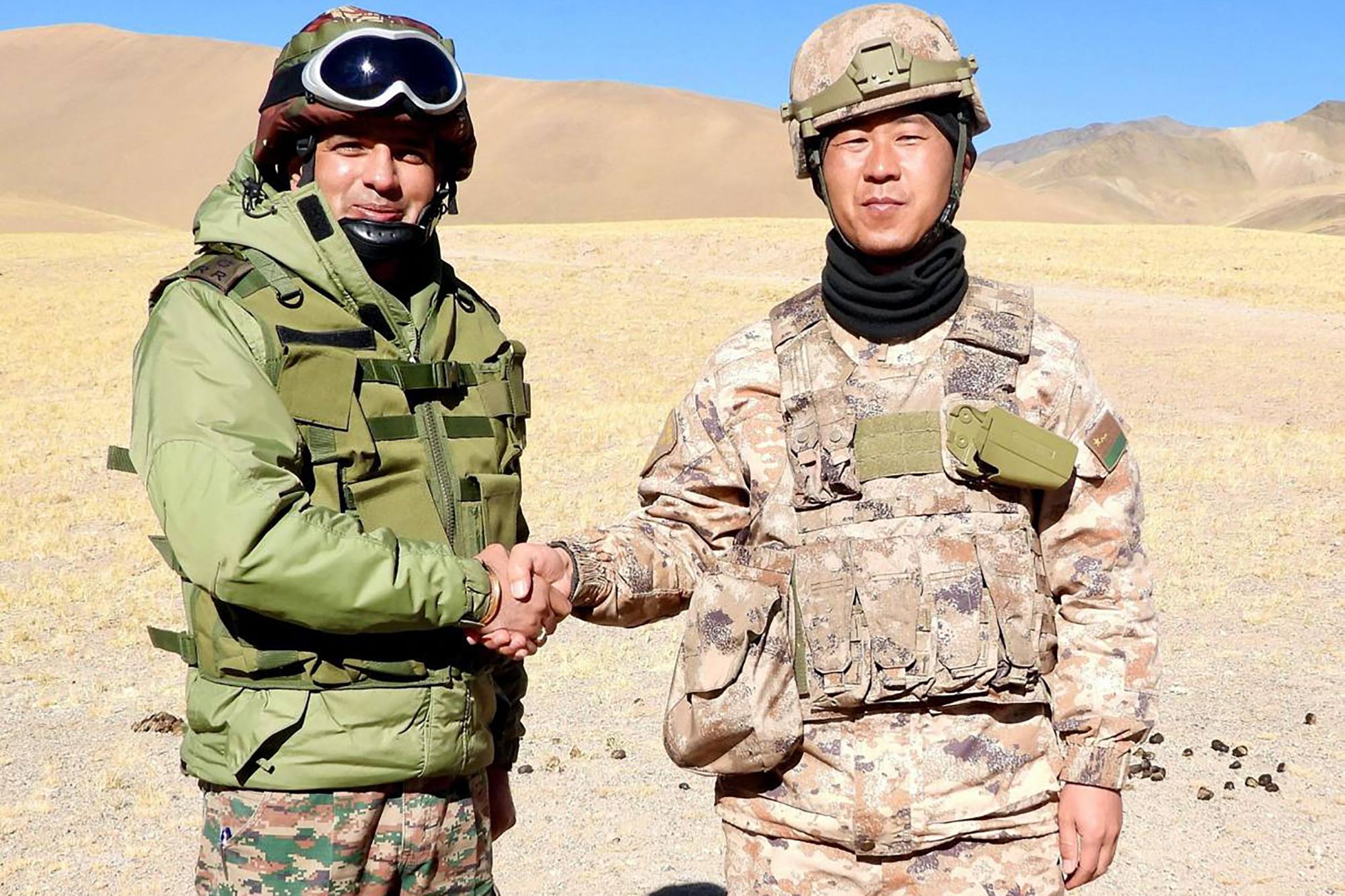New Apaches for India: are US helicopters battle-ready for future threats?
While the Indian army has hailed a delivery of three Apache AH-64E, experts are divided over the helicopters’ long-term battle potential

India’s acquisition of the latest variant of US-made Apache attack helicopters is a key step towards bolstering its ability to fight on two fronts against Pakistan and China, but experts are divided on whether the ageing aircraft can remain battleworthy over the long term.
On Tuesday, the Indian army took delivery of the first three AH-64E Apache helicopters, with plans to induct them into its attack aviation wing based in the state of Rajasthan. Three more units are expected to arrive by the end of this year.
“Milestone moment for Indian army as the first batch of Apache helicopters for army aviation arrive today in India,” the army posted on its official social media account. “These state-of-the-art platforms will bolster the operational capabilities of the Indian army significantly.”
Vivek Mishra, deputy director of strategic studies at the Observer Research Foundation, told This Week in Asia that the Apache helicopters’ ability to operate effectively over land and in a maritime environment made them a valuable defence asset for India.
“[The Apache] has a maritime component to it. Although it will be deployed on the western front [bordering Pakistan] for now, it can also be used in the Indo-Pacific if needed,” Mishra said.
India’s military should aim to acquire more helicopters, such as the Apache, as they can enhance its capacity to deal with threats from the Chinese and Pakistani fronts, according to Mishra.
The six helicopters were ordered under a 2020 deal worth 5,691 crore rupees (US$681 million) signed between US aerospace giant Boeing and India. It followed a separate US$2.5 billion deal signed in 2015 for the supply of 22 Apache units and 15 Chinook CH-47F heavy-lift helicopters – all the Apaches were delivered by 2020.

Observers see the deliveries of the Apache helicopters over the two terms of US President Donald Trump as a symbol of deepening ties between Washington and New Delhi on the defence and other fronts, in part helped by his cordial relationship with Indian Prime Minister Narendra Modi.
India’s 2025–26 defence budget allocation rose by 9.5 per cent to 6.81 trillion rupees (US$78.9 billion) from a year earlier, with 1.49 trillion rupees planned for the acquisition of modern platforms.
Richard Rossow, a senior adviser who holds the chair on India at the Washington-based Centre for Strategic and International Studies, said during the early days of the Modi government, the country’s defence modernisation focused more on power projection, notably in the maritime domain, amid China’s increasing presence in the Indian Ocean.
Given the border clashes between India and China, and the more recent conflict with Pakistan, Delhi has been paying more attention to land-based threats, according to analysts.
For instance, India was shifting more funds from its budget to acquire drones, attack helicopters and light cannons, which could be deployed in mountain warfare, Rossow said.
Unhandled type: inline-plus-widget {“type”:”inline-plus-widget”}
Apache helicopters, in particular the AH-64E model, were one of the more advanced war-fighting systems available on the market, he added.
“The Apache’s ability to operate in diverse environments and survive damage, apart from its surveillance and weapons capabilities, will be an upgrade from India’s existing attack helicopter platforms,” Rossow said.

Known as “tanks in the air”, the AH-64E Apache helicopters are still actively used by the US army and have been sold to countries including the United Kingdom, Greece, Israel, Japan, South Korea, the Netherlands, Singapore, Indonesia, Kuwait, Qatar, Saudi Arabia, the United Arab Emirates and Egypt.
India’s defence doctrine had long avoided over-reliance on any single supplier and having the US to provide support to the Indian military through the Apache helicopters was crucial, Michael Rubin, a former Pentagon official, told This Week in Asia.
“It not only cements India’s military capabilities in key regions along the Pakistan and Chinese borders, but it enables joint training and maintenance that can build the US-Indian relationship further,” Rubin said.
The Apache helicopters can operate well within India’s border regions, which can give it an advantage in areas like Kargil and Siachen, according to Rubin.
On the threat from China, Rubin said the Chinese military could redeploy some of its helicopters to the region bordering India but it would be wary to escalate any skirmish due to the presence of the Apaches.
With India experiencing difficulties in acquiring weapons from its long-standing supplier Russia and the US’ growing distrust of Turkey, the Apache deal could pave the way for more acquisitions of American weapons by the Indian military, he added.
“There is also the hope in Washington that if the experience with US arms goes positively, it could open more doors to new contracts and platforms.”

Apache’s ‘increasing limitations’
Other experts, however, are sceptical about the Apache’s long-term combat capabilities.
During a conference at the Centre for a New American Security conference in Washington last month, Lieutenant General Joseph Ryan, the US Army’s deputy chief of staff for operations, plans and training, said the Apache helicopters were losing their battlefield edge.
Explaining the reasons for the US army to phase out older versions of the Apache and introduce the most recent variant, Ryan said: “AH-64Es are also on the cusp of being capabilities where we don’t necessarily see them contributing to the fight the way they have done perhaps in the past.”
Christopher Clary, an associate professor of Political Science at Albany University, told This Week in Asia that the AH-64E variant might face increasing limitations given the evolving threat environment.
“Modern air defences generate real dangers for combat helicopters, and unmanned aerial vehicles can perform many of the missions currently undertaken by the Apache. It is perhaps not a surprise that the US has no follow-on programme for a next-generation helicopter like the Apache,” said Clary, who is also a non-resident fellow at Washington’s Stimson Centre.
As long as the Indian army requires the AH-64Es for its particular defence needs, the helicopters would be suitable given their best-in-class capabilities, according to Clary. “The question is whether India needs this type of helicopter,” he said.